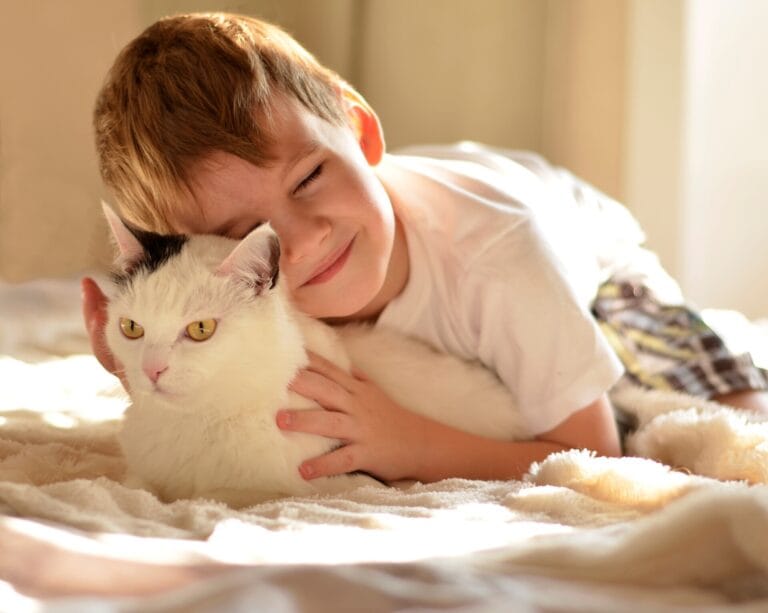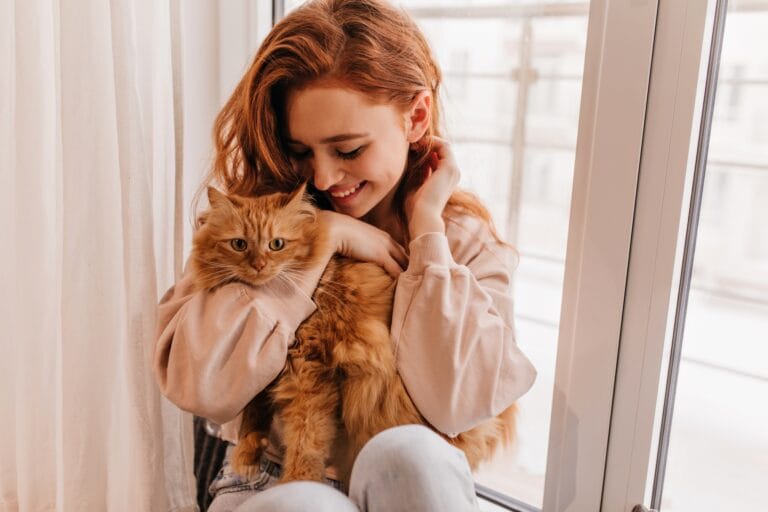Have you ever wondered what’s behind that soothing, rhythmic purr your cat produces? Is it a sign of happiness, a secret cat language, or something else entirely? While purring is one of the most recognizable sounds in the animal kingdom, the reasons behind it are as layered as your cat’s personality. Let’s dive into the science of why cats purr and what those magical vibrations really mean.


The Purring Puzzle
Purring is more than just a happy noise; it’s a multifunctional tool in a cat’s communication arsenal. Cats purr by using their laryngeal muscles and diaphragm to create vibrations as they breathe. This sound is produced at a frequency of around 25 to 150 Hertz—a range that is believed to have healing properties. Yes, your cat might be a walking, purring self-care guru.
Scientists believe cats purr not only for joy but also for stress relief, healing, and even as a way to communicate with humans and other animals.
The Happiness Factor
One of the most common reasons cats purr is pure, unfiltered happiness. When your cat curls up in your lap and purrs softly, it’s their way of saying, “I’m content.”
Happy cat signs like slow blinks, kneading paws, and a relaxed posture often accompany these soothing vibrations. Purring during cuddle time is their version of a love letter—short, sweet, and straight to the point.
Funny Insight: Think of it like a cat version of humming to their favorite tune, except their playlist is always about you.
Purring as Communication
Cats are master communicators, and purring is one of their secret weapons. They use it to convey a variety of emotions and needs.
- Bonding with Humans: Cats quickly learn that purring gets your attention. Whether they’re hungry, lonely, or just want a cuddle, they’ll purr to get their point across.
- Kitten Communication: Mother cats purr to guide their kittens, creating a safe and comforting environment. In turn, kittens purr back to signal that they’re okay.
Engagement Hook: If your cat starts purring during dinner prep, it’s probably their subtle (or not-so-subtle) way of reminding you to share.
Purring as a Stress Buster
Cats also purr when they’re stressed, injured, or in pain. While this might seem counterintuitive, the act of purring helps them calm down and heal.
The vibrations produced by purring are thought to stimulate healing, reduce inflammation, and even ease breathing. It’s like a built-in therapeutic tool.
Practical Insight: If your cat is purring while showing signs of discomfort, such as hiding or reduced appetite, it’s worth a visit to the vet.
The Healing Frequency
What makes purring truly fascinating is its healing frequency. Studies suggest that the vibrations cats produce may actually promote bone density and tissue regeneration. This could explain why cats are so resilient and why they often recover quickly from injuries.
Pro Tip: A cat’s purring might not just be helping them—it could also be helping you! Those same frequencies are said to reduce human stress and even lower blood pressure.
Beyond the Stereotypes
Not all purring means happiness or healing. Sometimes, cats purr out of habit or even boredom. Observing their body language and context is key to understanding what they’re trying to convey.
Relatable Scenario: If your cat is sitting on your laptop, purring away, they’re probably just soaking up the warmth and enjoying your confused expression.
Key Takeaway
Purring is a complex, multifunctional behavior that serves as both a survival tool and a way to express emotions. From happiness and bonding to healing and communication, the purring phenomenon is just one of the many ways cats remind us of their mysterious and captivating nature.





